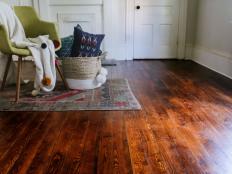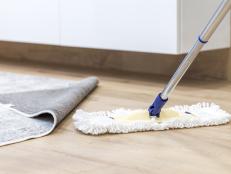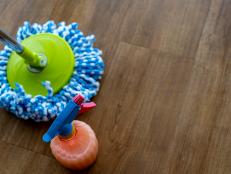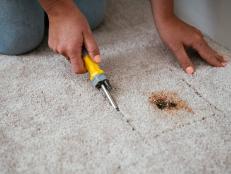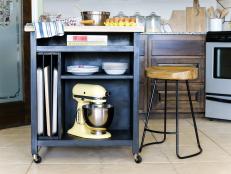How to Sand Hardwood Floors Yourself
Sanding your floors yourself can save you a lot of money—if you do it the right way. Here's what you need to know.

If your hardwood floors are in need of refinishing, you have two main choices: Do it yourself, or hire and pay someone else to do it for you. By sanding your floors yourself, you could potentially save hundreds or even thousands of dollars—so long as you do it right.
Here’s what you need to know before you get started.
First, you need to understand the condition your floor is in. What kind of wood is it? Is it painted? How thick is the finish? How many times has it previously been refinished? You need to know these things in order to select the right grit—or coarseness of the sander—for your floor. If you have questions about the ideal range for your floor, ask for help at the home improvement store where you rent sanding equipment. You have to remove the finish on the floor before you can properly sand out all the scratches and imperfections that have accumulated over the years.
You’ll need two kinds of sanders for the process: A walk-behind sander, like a drum floor sander, and a floor edger, to get into the corners and smaller nooks and crannies. You can rent these from home improvement stores.
Before you start sanding, remove everything from the room and vacuum the floor. You’ll need to sand the entire floor, not just one section. Sanding the floor will kick up a lot of dust, so protect light fixtures and tape over electrical outlets. Remove shoe moulding, the wood trim where the wall meets the floor. You don’t want the sander to hit and damage this, and you also want to be able to get underneath it. You may be able to use a spackle knife and razor blade, or you may need to pry it off with a crowbar. Use a pencil, painter’s tape or sticky notes to label each piece as you set it aside so you don’t end up with a jig saw puzzle when you’re ready to reinstall it.
If you have any squeaks or loose floorboards, fix them before you begin sanding.
When you’re ready to get started with the drum sander, put on a mask to avoid breathing in dust and wear eye and ear protection. Drum floor sanders can be extremely loud and they can kick up a lot of dust into the air.
Be sure you start with the coarsest grit of sandpaper and take care not to gouge the floor. It’s best to tilt the sander back and start it while it’s not in contact with the floor. You may want to practice using the sander on a part of the floor that will be covered by a table, couch or bookcase, or even get a large piece of plywood to practice on until you feel comfortable.
Start in the middle of your floor and sand from end to end, overlapping each pass by just an inch or two. You’ll do this several times—once for each grit of sandpaper you’re using. In between stages, clean the floor to remove dust and dirt.
While sanding, you’ll need to keep moving. While your floor can probably take more sanding than you think, a drum sander is intended to remove a lot, and you can easily damage your floor if you’re not paying attention. Don’t stand still with the sander at any point—just keep moving slowly but surely.
After you’ve sanded the bulk of the floor, use the edge sander to get into the spaces the drum sander can’t reach. Wipe the floor clean with a cloth before you’re ready to add the stain.






